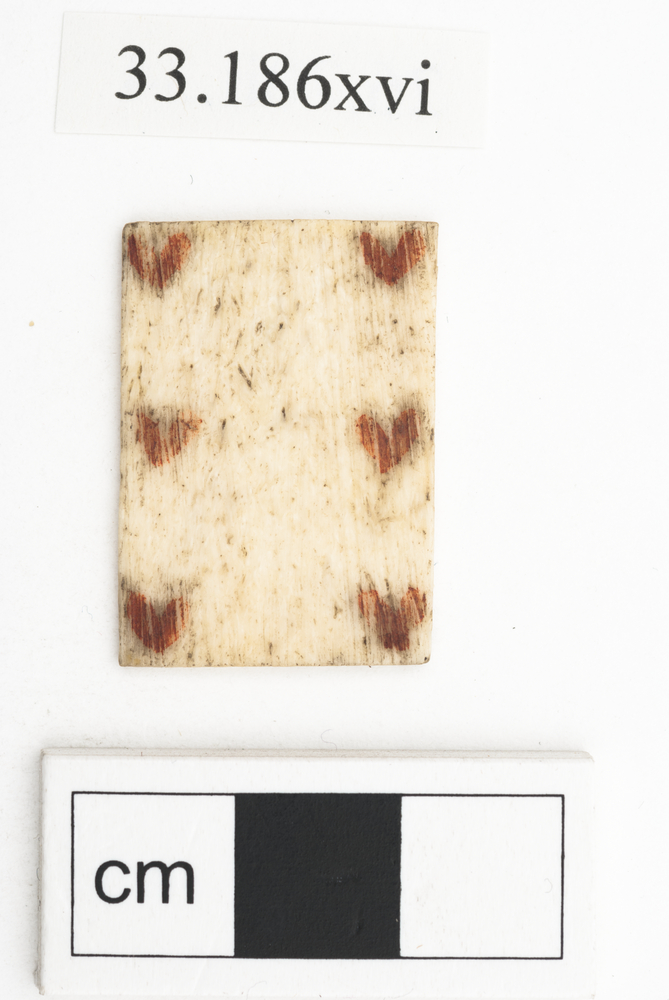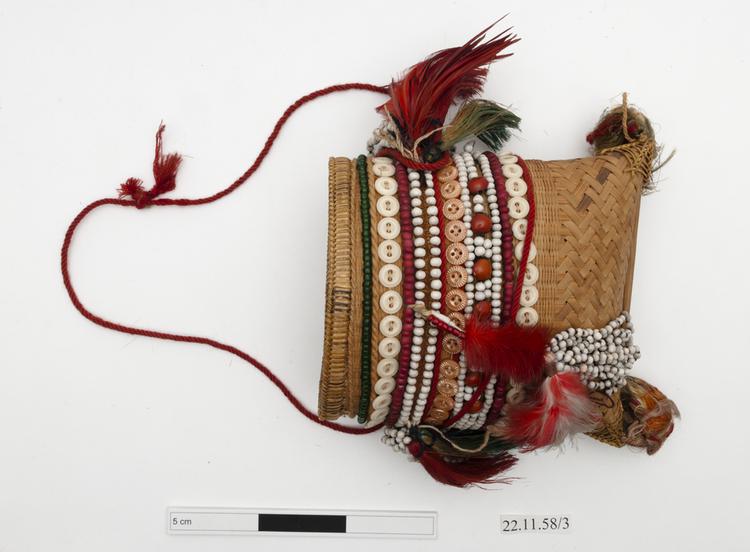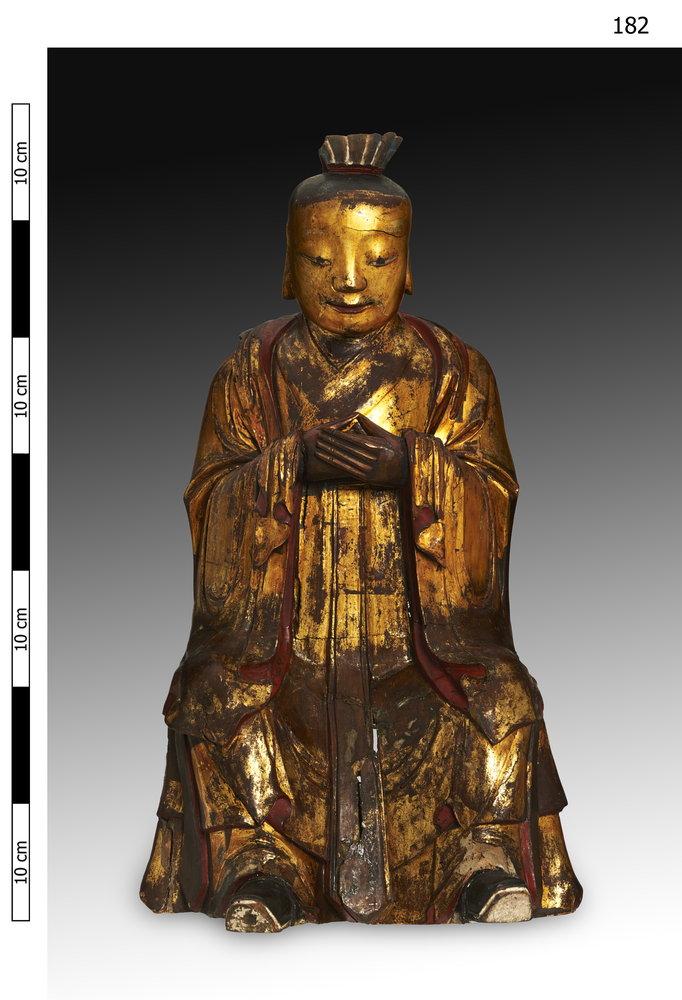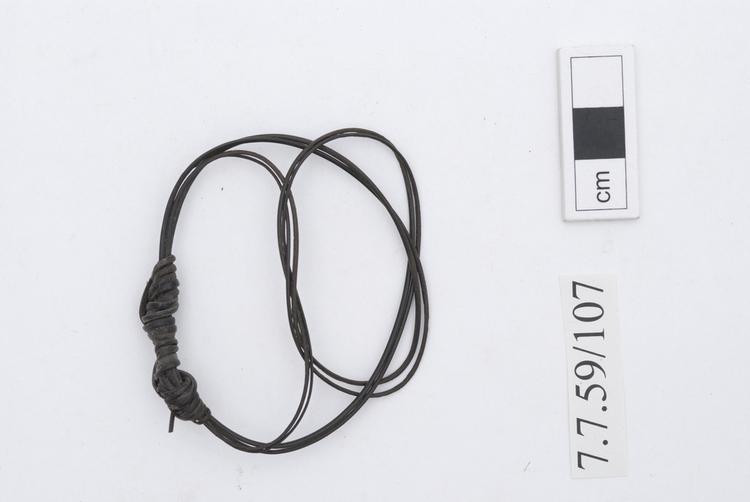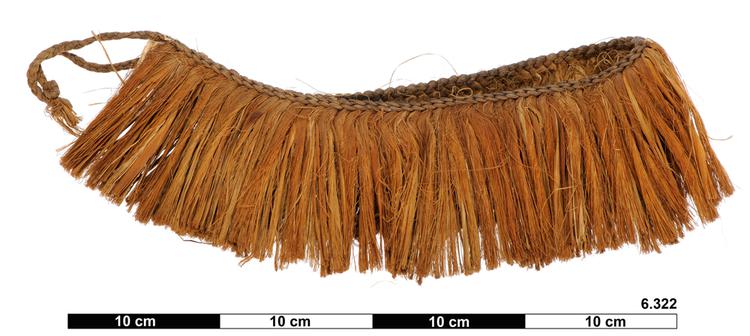
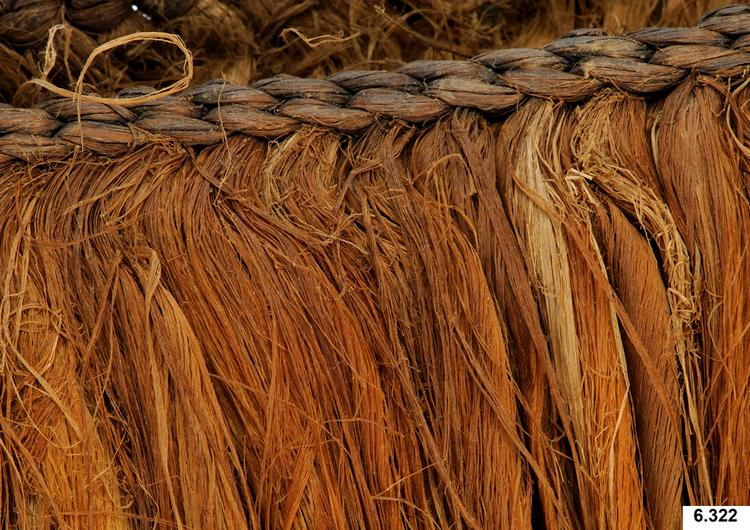
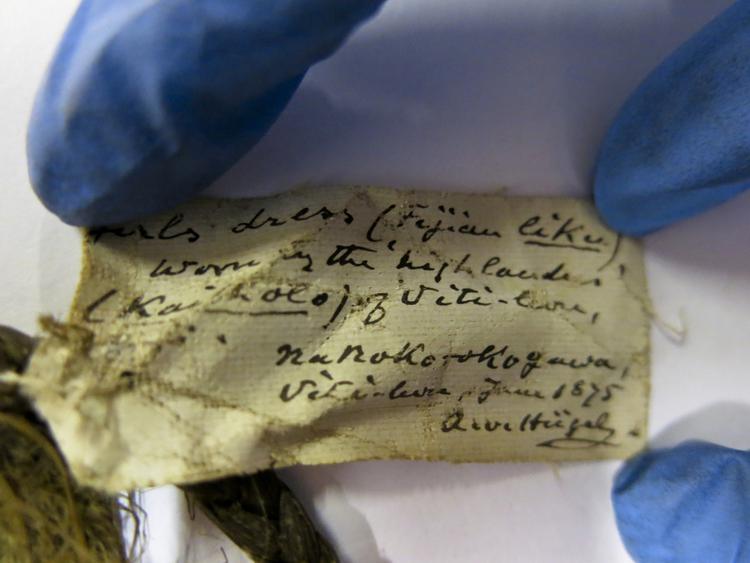

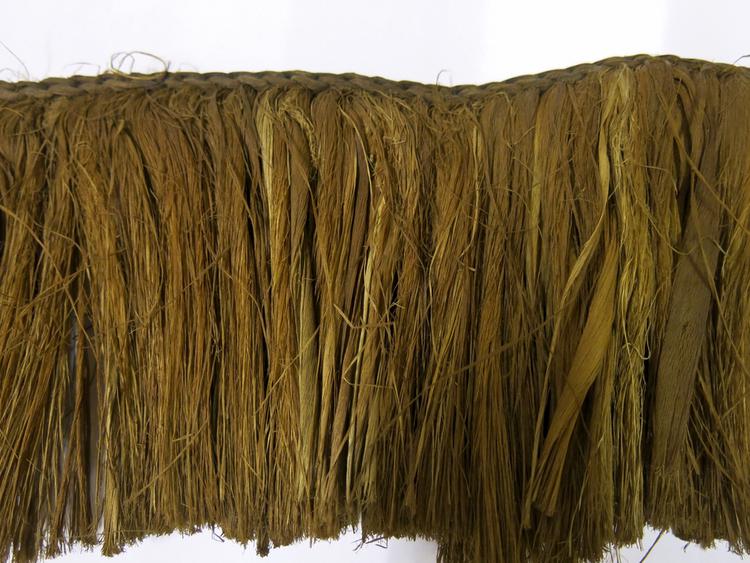

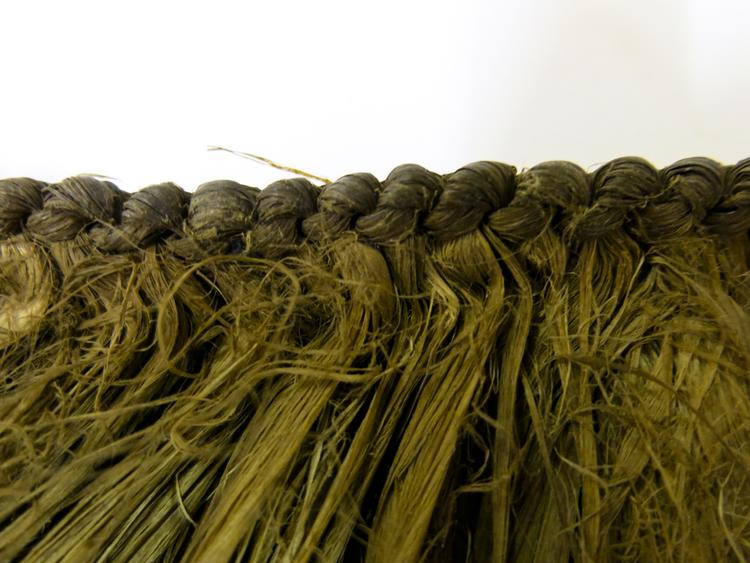
Skirt
Young Woman’s Skirt, Liku, Kai Colo people, Viti Levu island, Fiji, Western Polynesia. Skirts made from very thin strips of various leaves plaited into a rope belt tied around the waist were worn throughout Melanesia. Fiji, in Western Polynesia, was a ‘transitional’ society and shared many cultural features with those to the west in Melanesia and those to the east in Polynesia. It was the easternmost occurrence of such ‘grass skirts’ which become part of the stereotypical image of Pacific Islanders in the Western imagination. Overall, these garments were light, loose and kept biting insects and the rain off. They were ideally suited to the environment of tropical Melanesia. This style of Fijian liku, from the highlands of Fiji’s largest island, was the shortest of all such garments: it was worn by unmarried girls and women, worn very low on the hips, and intended as much to emphasise the movement of the hips as for any other reason. Once women were married, their liku tended to be worn longer, and women who were pregnant or nursing would display that special status by dyeing their liku orange with turmeric. Such skirts were woven from a variety of sedges, Pandanus leaf strips or whatever came to hand. Even fine filament tree roots were used in some places. This particular liku was collected in June 1875 among the Kai Colo people by Baron Anatole Von Hügel. He was a voracious collector as a young man in Fiji, and later became the first curator of Cambridge University’s Museum of Archaeology and Anthropology. He championed an admiration for the Fijian arts throughout his life, and passed this skirt to the Horniman Museum in 1906 through his Cambridge University colleague A. C. Haddon. Vegetable fibre. Late 19th Century.



